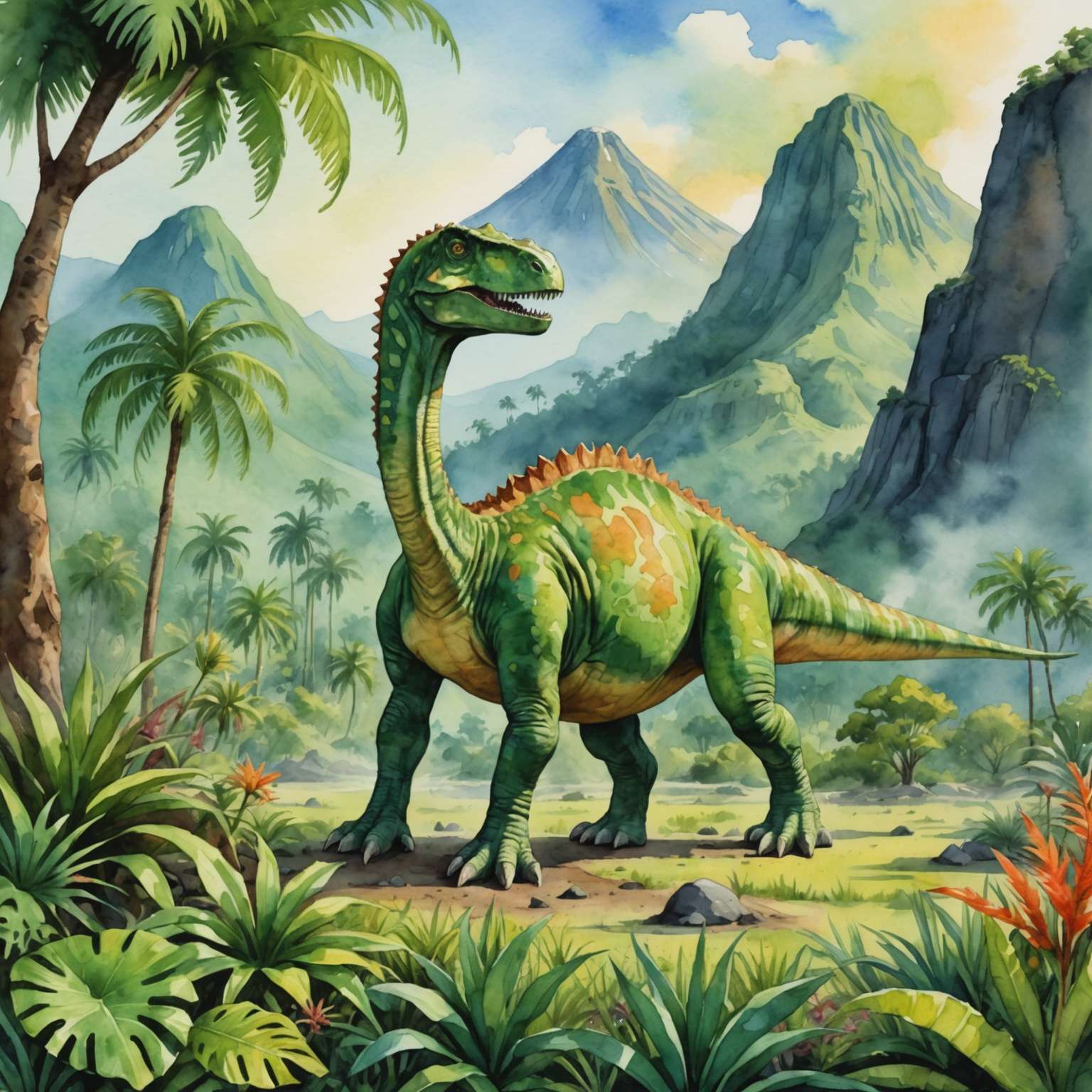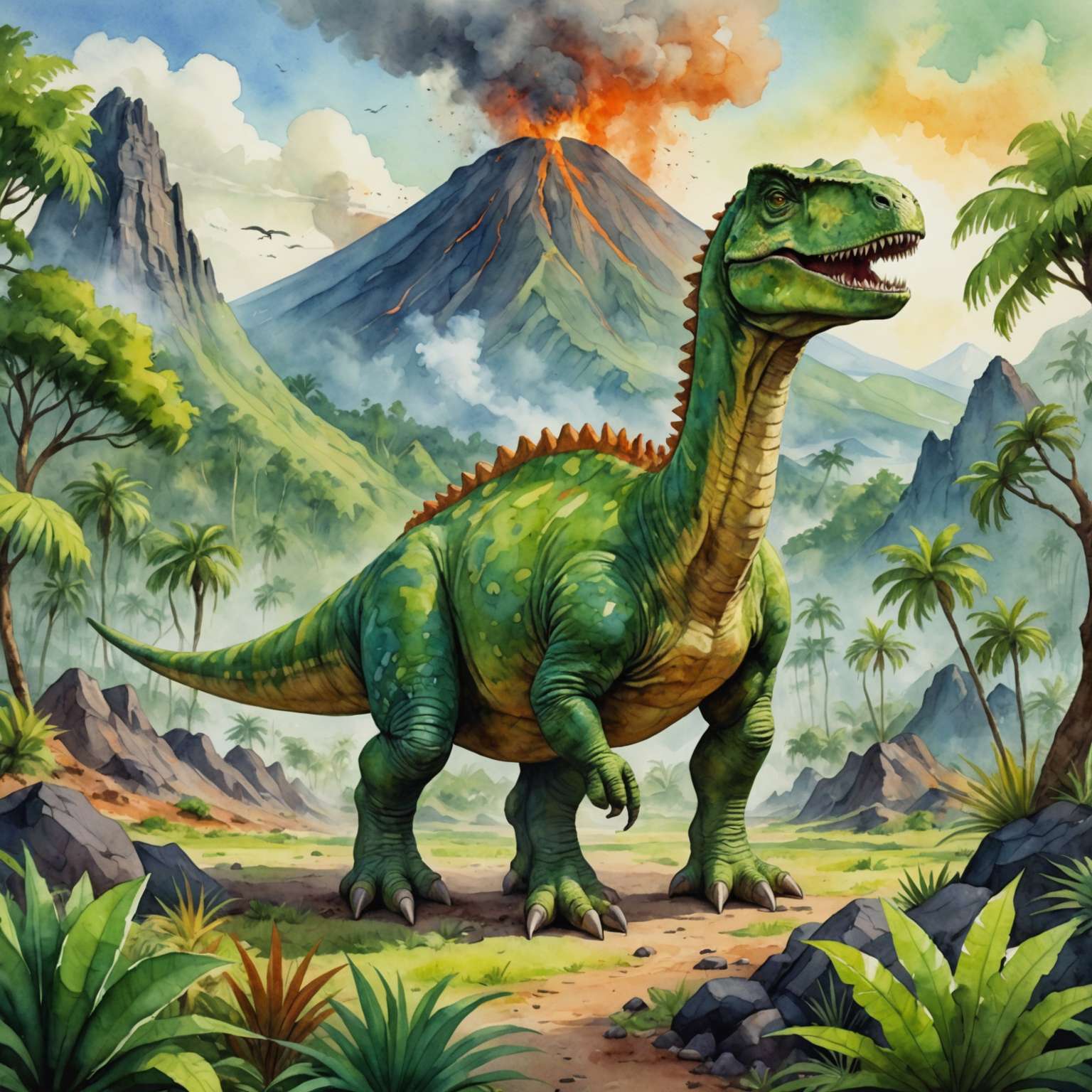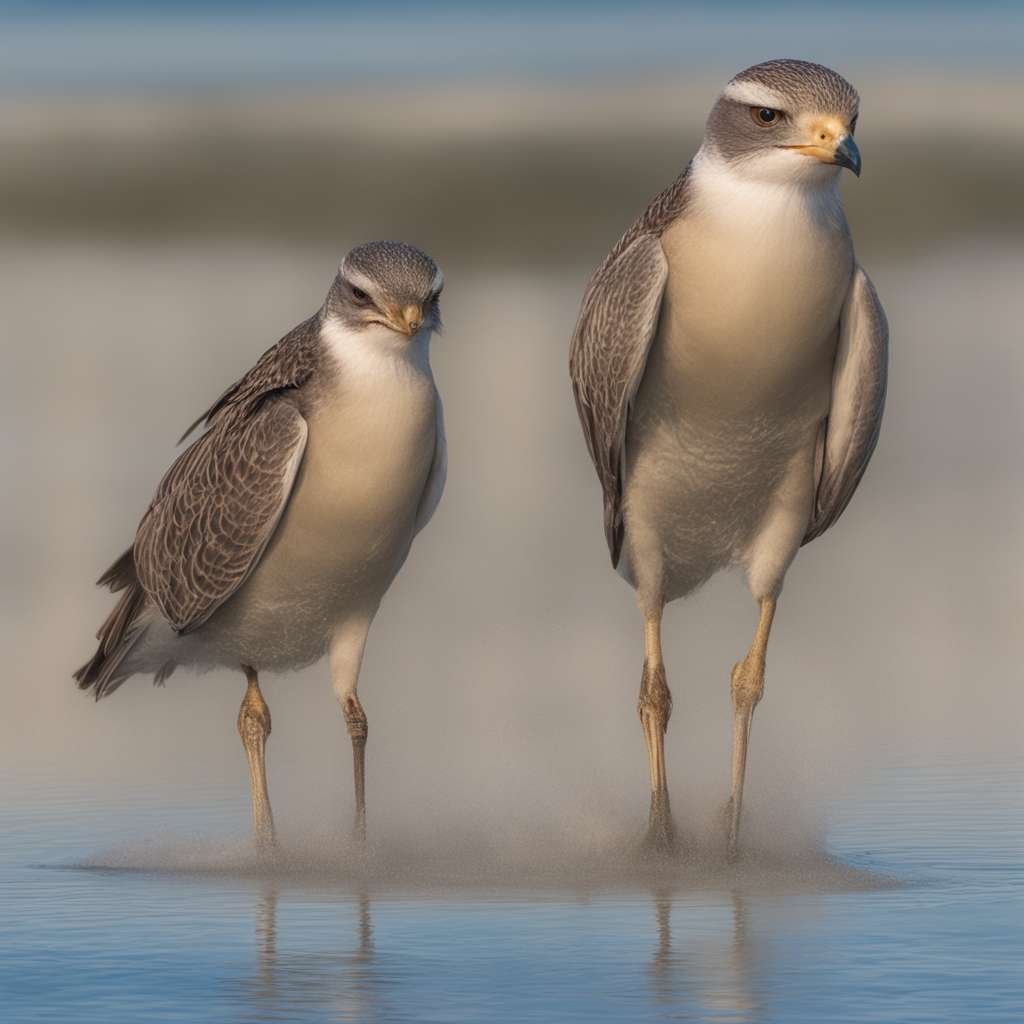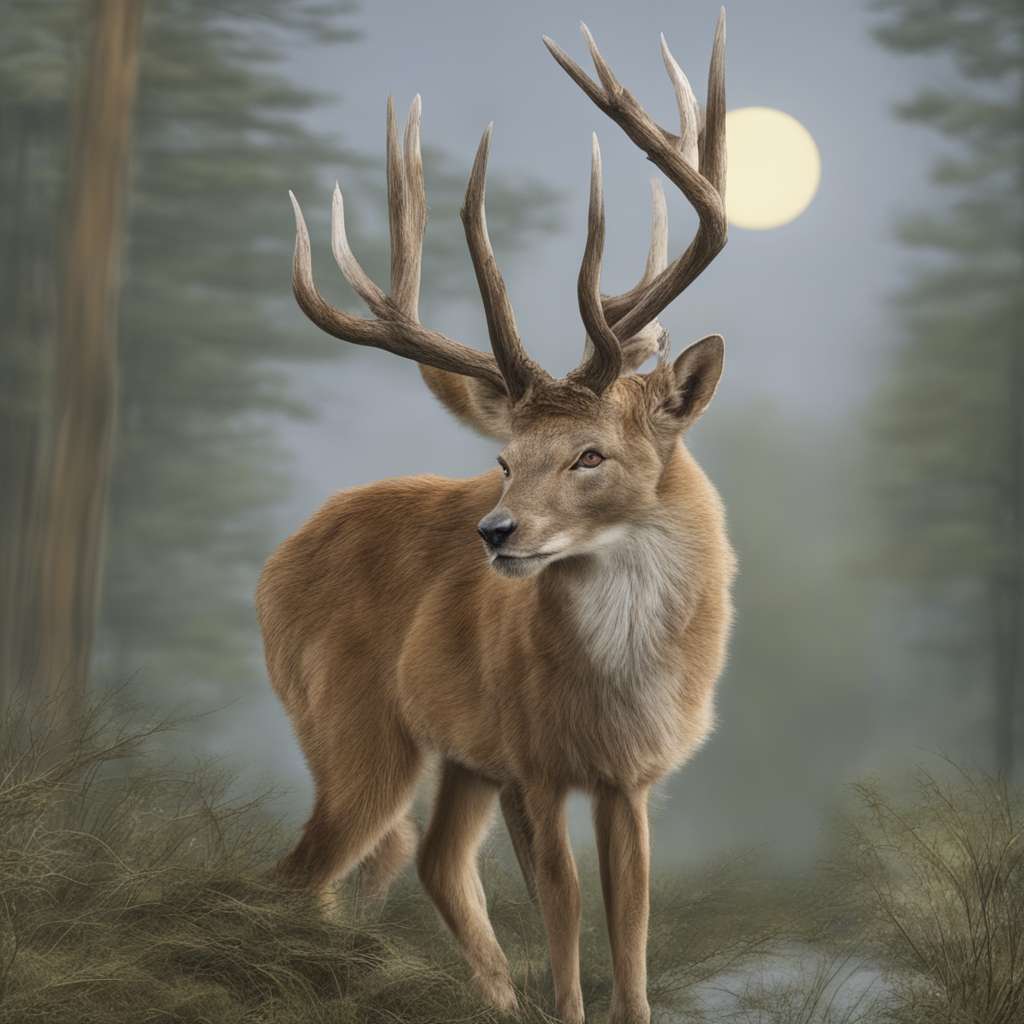
What makes the green-boned dinosaur gnatalie so unique?
- Gnatalie's bones are dark mottled olive green due to the mineral celadonite, a rare occurrence in fossilization.
- Discovered in the Badlands of Utah in 2007, Gnatalie's unique preservation is attributed to volcanic activity from 50 to 80 million years ago.
- Gnatalie lived during the Late Jurassic Era, approximately 150 million years ago, making her significantly older than the Tyrannosaurus rex.
The latest addition to the Natural History Museum in Los Angeles is a remarkable discovery that has captivated both scientists and the public alike. Named “Gnatalie” due to the gnats that swarmed during her excavation, this long-necked, long-tailed herbivorous dinosaur is not only unique in her species but also in the coloration of her bones. Unlike typical dinosaur fossils, which are usually brown from silica or black from iron minerals, Gnatalie’s bones are a dark mottled olive green. This rare coloration is attributed to the mineral celadonite, which formed during the fossilization process in volcanic or hydrothermal conditions that usually destroy buried bones.
The Discovery and Its Significance
Gnatalie’s fossils were discovered in 2007 in the Badlands of Utah, a region known for its rich paleontological finds. Researchers believe that the celadonite entered the fossils when volcanic activity around 50 million to 80 million years ago caused hot minerals to replace the previous ones. This process preserved the bones in their unique green hue. Gnatalie lived approximately 150 million years ago during the Late Jurassic Era, making her significantly older than the Tyrannosaurus rex, which lived around 66 million to 68 million years ago.
Luis M. Chiappe of the museum’s Dinosaur Institute emphasized the educational value of such discoveries, stating, “Dinosaurs are a great vehicle for teaching visitors about the nature of science.” The nearly 80-foot-long dinosaur is expected to engage visitors in scientific discovery and reflection on the wonders of the natural world.

Scientific and Public Reception
The scientific community has shown great interest in Gnatalie. Matt Wedel, an anatomist and paleontologist at Western University of Health Sciences in Pomona, near Los Angeles, mentioned that he had heard “rumors of a green dinosaur” during his graduate studies. Upon glimpsing the cleaned bones, he noted that they were “not like anything else seen.” Gnatalie is similar to the sauropod species Diplodocus, a family of massive herbivores that includes Brontosaurus and Brachiosaurus.
John Whitlock, a researcher at Mount Aloysius College in Pennsylvania, expressed excitement about having a complete skeleton to fill in the blanks for less complete specimens. He stated, “It’s tremendously huge and adds to our ability to understand taxonomic and anatomical diversity.”
The public also played a role in naming the dinosaur. Last month, the museum held a vote on five name choices: Verdi (derived from the Latin word for green), Olive (a small green fruit symbolizing peace, joy, and strength), Esme (short for Esmeralda, Spanish for Emerald), and Sage (an iconic green plant grown in the Natural History Museum’s Nature Gardens). Ultimately, “Gnatalie” was chosen, reflecting the whimsical nature of the public’s engagement with this extraordinary find.
Our Advice on the City
Los Angeles offers a plethora of attractions for both occasional and expert travelers. If you plan to visit the Natural History Museum to see Gnatalie, consider also exploring other nearby cultural landmarks. The museum’s new welcome center, where Gnatalie will be displayed, is set to open this fall and promises to be a highlight for visitors.
For occasional travelers, we recommend taking a guided tour of the museum to fully appreciate the breadth of its collections. The museum also offers interactive exhibits and educational programs that are perfect for families and curious minds of all ages.
Expert travelers might enjoy delving deeper into the scientific aspects of the exhibits. The museum frequently hosts talks and Q&A sessions with leading paleontologists and researchers. Additionally, the Dinosaur Lab offers a behind-the-scenes look at how fossils are prepared for display, providing a unique insight into the meticulous work that goes into preserving these ancient treasures.
In conclusion, Gnatalie’s discovery is not just a significant scientific find but also a fascinating story that bridges the gap between the ancient past and modern scientific inquiry. Whether you are a casual visitor or a seasoned traveler, the Natural History Museum in Los Angeles offers an enriching experience that will leave you with a deeper appreciation for the wonders of our natural world.
- Official dinosaur exhibit page at Natural History Museum of Los Angeles
- Official website of the Dinosaur Institute at the Natural History Museum of Los Angeles, where Gnatalie is housed
- Official website of the Dinosaur Institute at the Natural History Museum of Los Angeles County, featuring information on dinosaur research and exhibits.
Trending now








